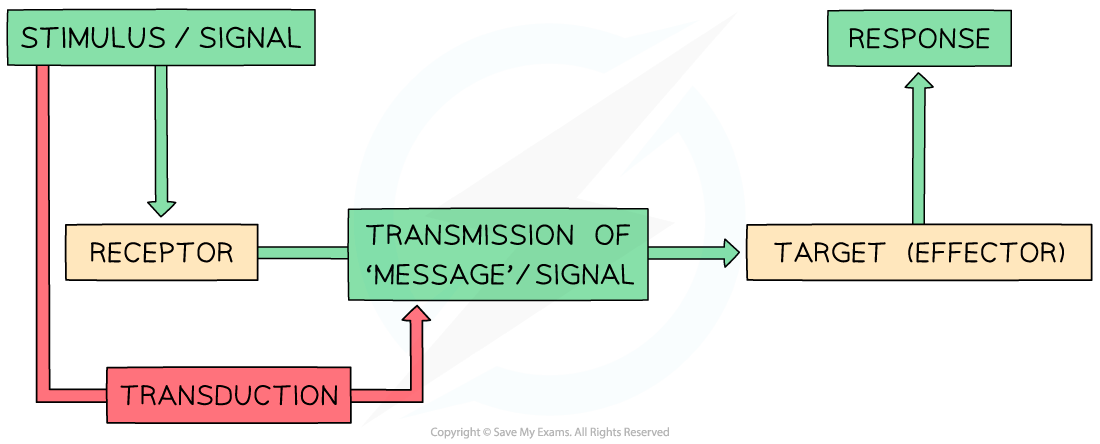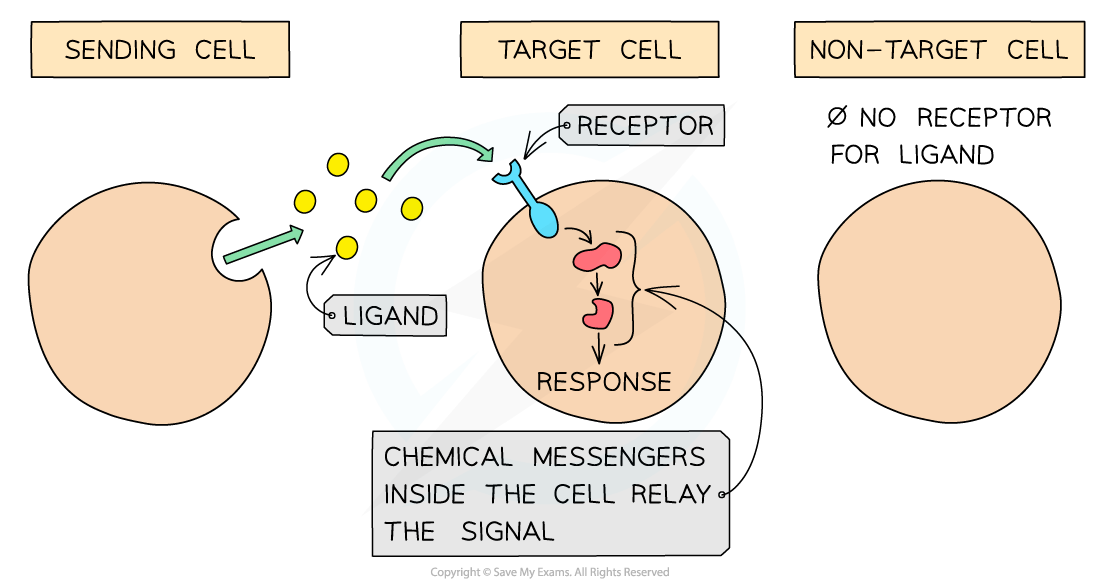Cell Signalling (Cambridge (CIE) AS Biology): Revision Note
Exam code: 9700
Cell signalling
Cell signalling is the process by which messages are sent to cells
Cell signalling is very important as it allows multicellular organisms to control / coordinate their bodies and respond to their environments
Cell signalling pathways coordinate the activities of cells, even if they are large distances apart within the organism
The basic stages of a cell signalling pathway are:
A stimulus or signal is received by a receptor
The signal is converted to a ‘message’ that can be passed on – this process is known as transduction
The ‘message’ is transmitted to a target (effector)
An appropriate response is made

Transmission of messages in cell signalling pathways requires crossing barriers such as cell surface membranes
Cell surface membranes are therefore very important in signalling pathways because the membrane controls which molecules (including cell signalling molecules) can move between the internal and external environments of the cell
Signalling molecules are usually very small for easy transport across cell membranes
Typically in cell signalling pathways, signalling molecules need to cross or interact with cell membranes
Ligands
Signalling molecules are often called ligands
Ligands are involved in the following stages of a cell signalling pathway:
Ligands are secreted from a cell (the sending cell) into the extracellular space
The ligands are then transported through the extracellular space to the target cell
The ligands bind to surface receptors (specific to that ligand) on the target cell
These receptors are formed from glycolipids and glycoproteins
The message carried by the ligand is relayed through a chain of chemical messengers inside the cell, triggering a response


Unlock more, it's free!
Did this page help you?